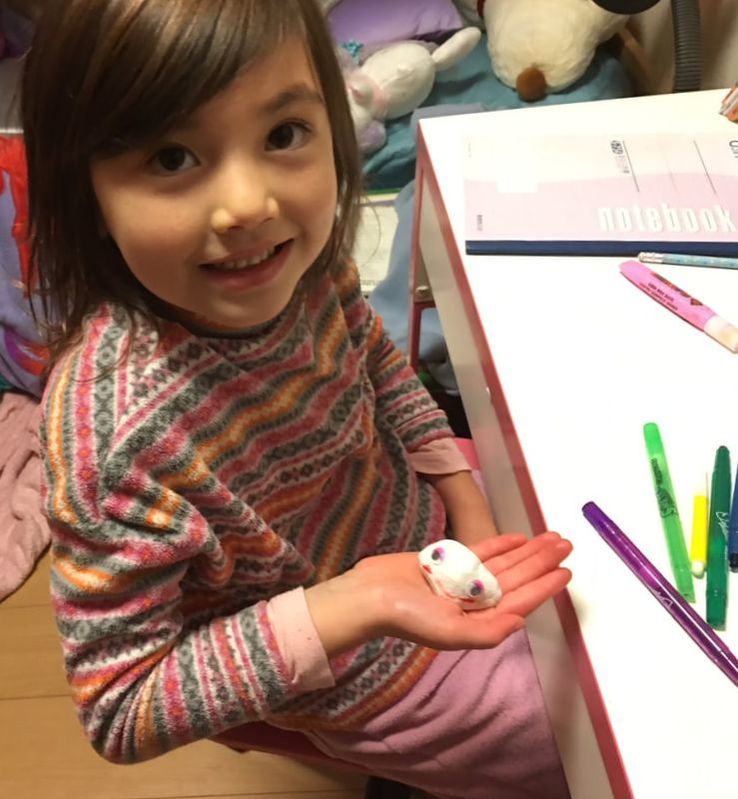- Home
- Awe (NEW 7/24)
- This ain't "happy-ology"...
- Philippiness 2/23 Science of Happiness - Class & Life
- SofH - class & life Spring 2022
- NEW - Time Confetti
- NEW - Happiness Hacks
- NEW - The Power of Fun
- Getting started
- Introducing happiness
- Main Activity Download Center
- 10 Minutes for Happiness (quick tasks)
- Happiness Haiku (consolidation)
- Positive brain chemicals
- New! 3 minutes for positivity
- Becoming Friends
- Savoring
- 5 photos (A savoring task with student projects)
- Flourishing
- Flow
- Positivity
- Laughter
- Meditation
- Mindfulness for kids
- Balloon toss (icebreakers)
- Song/lip dub (Marc's Ss): Pharrell William's HAPPY
- Activities from other teachers
- Don't laugh at me
- Videos of Marc's Talks
- Posters
- Bookshelf (NEW books listed)
- Links
- NUFS MA TESOL task page
- English Firsthand syllabus tie-in
- Monk for a Month (mindfulness)
- Misc PowerPoint downloads
- Contact Marc
- .
- InnovationsPosPsych downloads
- Positive Psychology in SLA (book)
- ..
- NEW BOOK
- test page
- songs for distance teaching
Mindfulness &
young children.
Last update: 4/2023
NEW From Edutopia. 8 Activities for Students (and Teachers) to Create a Mindful Classroom
NEW The Center for Healthy Minds (U.of Wisc-Madison) and Wisconsin Public has released a series of short videos on "Kindness in the Classroom. Click for access.
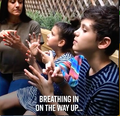
NEW CLICK HERE to download a short (2-minute) video showing 4 mindfulness activities for kids. 2 are elsewhere this website but the other 2 are new to me. This is from: https://www.facebook.com/officialplayfull/ Thanks to Pravita Indrati for sharing this.
Here's a short video (3:41) you can use to introduce the ideas with either kids or adults. Ask what the do/did when they become angry? What does on in their mind and body. Then watch the video. What do they do already. What do they want to try. Note the video makes use of a "mind jar" (Activity 5, below). If you are going to be making these, you might want to have one ready to demonstrate. Information about the video is on the Mindful.org webpage HERE. The video is below:

More videos
Youtube has many videos related to The Kindness Curriculum. They are designed for use with kids. Most are 4-6 minutes. They demonstrate things like breathing and meditation. A few are best used with teachers.
CLICK HERE to see your choices.
Youtube has many videos related to The Kindness Curriculum. They are designed for use with kids. Most are 4-6 minutes. They demonstrate things like breathing and meditation. A few are best used with teachers.
CLICK HERE to see your choices.
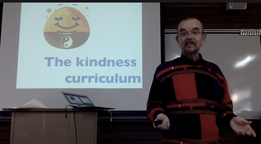
Here's a longer video (about an hour) of Marc introducing some aspects of the Kindness Curriculum for his students. They are university students who want to be elementary school teachers.
Kindness Curriculum, video part 1 (45 minutes)
Kindness Curriculum, video part 2: reading books to kids. (5 minutes)
Here's a handout useful for teaching them about reading book aloud to kids.
Kindness Curriculum, video part 3: Alphabreaths (5 minutes)
Kindness Curriculum, video part 1 (45 minutes)
Kindness Curriculum, video part 2: reading books to kids. (5 minutes)
Here's a handout useful for teaching them about reading book aloud to kids.
Kindness Curriculum, video part 3: Alphabreaths (5 minutes)
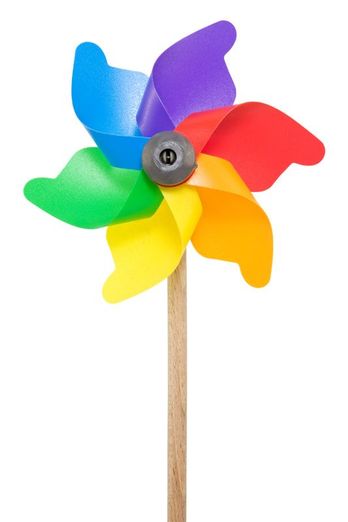
The Center for Healthy Minds has been studying mindfulness in young children. It recently released a “Kindness curriculum” which is free at https://centerhealthyminds.org/. And HERE is a link that will take you directly to the Pre-K curriculum page. The Center is at the University of Wisconsin – Madison. It was founded by Dr. Richard Davidson. He is a noted psychology researcher. If you’ve heard about the studies where Tibetan Buddhist monks were put into fMRI machines which recorded their brain function while they meditated, you’ve heard of Davidson’s work.
When I first heard about “mindfulness for young children” I thought, “How is that possible?” Mindfulness usually involves slowing down and observing things. How do you get little ones to do that?”
Along with some of my students (Elementary Education/ Early Childhood Education majors), I’ve been teaching some English classes to 1st-3rd graders at my university’s “Mori no Kodomo En” (literally “Park for Children of the Forest), a preschool and children’s education center.
These are ideas taken directly from or adapted from the Kindness curriculum.
We start by explaining the mindfulness involves noticing things.
You can notice things outside the body or inside.
Click HERE for a pdf version of this page.
Click HERE for an English/Japanese tasksheet for introducing "mindfulness."
Click HERE for a "happy/peaceful/love" handout
When I first heard about “mindfulness for young children” I thought, “How is that possible?” Mindfulness usually involves slowing down and observing things. How do you get little ones to do that?”
Along with some of my students (Elementary Education/ Early Childhood Education majors), I’ve been teaching some English classes to 1st-3rd graders at my university’s “Mori no Kodomo En” (literally “Park for Children of the Forest), a preschool and children’s education center.
These are ideas taken directly from or adapted from the Kindness curriculum.
We start by explaining the mindfulness involves noticing things.
You can notice things outside the body or inside.
Click HERE for a pdf version of this page.
Click HERE for an English/Japanese tasksheet for introducing "mindfulness."
Click HERE for a "happy/peaceful/love" handout
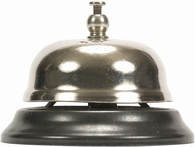
Activity 1: The bell.
We start by noticing something outside the body.
Get a bell (I use a hotel desk bell). Tell the kids to listen closely. When they hear the bell ring, they raise their hand. When the sound stops, the lower their hand. Do this 3 or 4 times.
Variation: They lower their hand slowly as the sound gets weaker.
We use this at the beginning of every mindfulness exercise.
We start by noticing something outside the body.
Get a bell (I use a hotel desk bell). Tell the kids to listen closely. When they hear the bell ring, they raise their hand. When the sound stops, the lower their hand. Do this 3 or 4 times.
Variation: They lower their hand slowly as the sound gets weaker.
We use this at the beginning of every mindfulness exercise.
Activity 2: breathing.
We move on to noticing breathing.
Get a pinwheel for each child. (They sell them in the garden sections of 100 yen shops). They hold the pinwheel in one hand. They put the other hand on their stomach (belly). They inhale deeply. They exhale slowly, noticing the pinwheel moving and also how their belly moves.
Variation: Instead of the pinwheel, substitute flowers (artificial work fine). Get ones that will move when they blow on them. We use this just to offer a fresh way to repeat the breathing activity during the next class.
Activity 3: Song: May you be happy, peaceful and filled with love.
Video on youtube.com: Search for “Betsy Rose May you be happy”. Or click on the video below.
(You might want to be careful when searching, especially with the kids. There is also a burlesque dancer named Betsy Rose with many YouTube videos.) Teach the words happy, peaceful, filled with love. Teach the children the song. Once they know it, we add gestures (happy= point to smile, peaceful = hands on chest, filled with love = hands form heart). Also change pronouns to “May I be happy” and “May we be happy.” Have them point to other children as they sign.
We use this song every week to finish our mindfulness exercise.
Click HERE for the song lyrics.
The curriculum doesn’t mention this but the lyrics are part of a very well-known “Loving-kindness/ compassion” meditation tradition in Buddhism, Hinduism, and Jainism (Metta meditation or maitri meditation). This version is not a religious meditation.). I find Loving-kindness meditation useful with my students because it is more concrete and easier to do than some other forms of mediation. For more information, see the meditation page of this website.

Activity 4: Belly buddies.
Give each child an object that is kind of heavy. We use stones that are 3-5 centimeters. 100 yen shops and garden centers sell smooth ones. (Optional): attach googly eyes to make it look like their buddy. After doing the bell and breathing, we make the belly buddies. Then students lie on the floor on their backs. They put the belly buddy on their belly, holding one finger a centimeter or two above it. They close their eyes and breathe slowly. They notice how their belly moves up and down. The weight of the belly buddy makes it more noticeable.
Give each child an object that is kind of heavy. We use stones that are 3-5 centimeters. 100 yen shops and garden centers sell smooth ones. (Optional): attach googly eyes to make it look like their buddy. After doing the bell and breathing, we make the belly buddies. Then students lie on the floor on their backs. They put the belly buddy on their belly, holding one finger a centimeter or two above it. They close their eyes and breathe slowly. They notice how their belly moves up and down. The weight of the belly buddy makes it more noticeable.
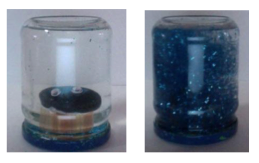
Activity 5: Mind jar
During the belly buddies activity, we have each child make two. Prepare a glass jar for each kid. We use 450 gram salsa jars (but that’s just because I eat a lot of salsa so have many available). Any jar about the size of a coffee mug works. Also prepare glitter (lame or kira-kira in Japanese.) They sell it with fingernail art accessories in 100 yen shops – Seria has a good selection. One pack for each kid. You’ll also need glycerine (グリセリンin Japanese), dishwashing soap, water and superglue.
The class before we are going make the mind jar, we superglue a belly buddy to a small wooden block already glued to the inside of the jar lid.
In class, we discuss and learn the names of a range of emotions: happy, sad, angry, etc.
We make a “mind jar” (which is basically like a snow globe). Cover the table with newspaper – glitter is messy to work with. Put about 5 drops of glycerine in their jars (Be careful. Glycerine burns if you get it in your eyes. With very young learners, the teacher should probably put it in. If anyone gets it in their eyes, wash it out with a lot of water). Also one drop of dishwashing soap, one pack (about 2 teaspoons) of glitter. Carefully fill the jar almost to the top. Put superglue all around the rim of the jar and screw the lid (with the belly buddy attached, upside down). Wait until the superglue dries.
This “mind jar” becomes a metaphor. When we are angry, It is like when we shake the jar. The glitter swirls around. It is like a storm. We can’t even see our friend, the belly buddy. It is only when we slow down – calm down, that things are clear. Shake the jar a few times (if theirs are still drying, they can all look at yours). They breathe deeply and notice their own bodies slowing down as the glitter settles.).
During the belly buddies activity, we have each child make two. Prepare a glass jar for each kid. We use 450 gram salsa jars (but that’s just because I eat a lot of salsa so have many available). Any jar about the size of a coffee mug works. Also prepare glitter (lame or kira-kira in Japanese.) They sell it with fingernail art accessories in 100 yen shops – Seria has a good selection. One pack for each kid. You’ll also need glycerine (グリセリンin Japanese), dishwashing soap, water and superglue.
The class before we are going make the mind jar, we superglue a belly buddy to a small wooden block already glued to the inside of the jar lid.
In class, we discuss and learn the names of a range of emotions: happy, sad, angry, etc.
We make a “mind jar” (which is basically like a snow globe). Cover the table with newspaper – glitter is messy to work with. Put about 5 drops of glycerine in their jars (Be careful. Glycerine burns if you get it in your eyes. With very young learners, the teacher should probably put it in. If anyone gets it in their eyes, wash it out with a lot of water). Also one drop of dishwashing soap, one pack (about 2 teaspoons) of glitter. Carefully fill the jar almost to the top. Put superglue all around the rim of the jar and screw the lid (with the belly buddy attached, upside down). Wait until the superglue dries.
This “mind jar” becomes a metaphor. When we are angry, It is like when we shake the jar. The glitter swirls around. It is like a storm. We can’t even see our friend, the belly buddy. It is only when we slow down – calm down, that things are clear. Shake the jar a few times (if theirs are still drying, they can all look at yours). They breathe deeply and notice their own bodies slowing down as the glitter settles.).
I hope these ideas are interesting to you and your students.
May you and your students be happy, peaceful and filled with love.
May you and your students be happy, peaceful and filled with love.
